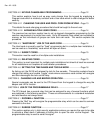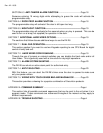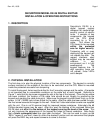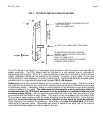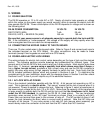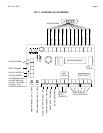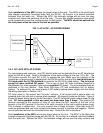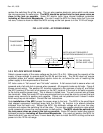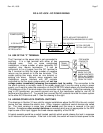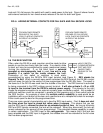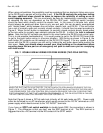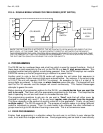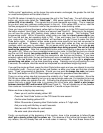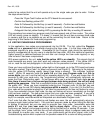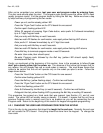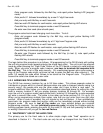
Rev. A.2, 10/03 Page-7
FIG 5: DC LOCK - DC POWER WIRING
NC1 C1 NO1
AC IN F
DC IN /OUT
+
POWER SUPPLY
12 OR 24 VDC
DC FAIL SECURE
OR FAIL SAFE LOCK
MOV
IF FAIL SECURE
IF FAIL SAFE
NOTE: MOV NOT REQUIRED IF
SECURITRON MAGNALOCK IS USED
+
+
DC POWER NEED NOT
BE REGULATED
3.4 USE OF THE “F” TERMINAL
The F terminal on the power strip is not connected to
anything. It is a free terminal with either of two
intended uses. First, on some complicated
installations, a large number of wires (generally DC
negative) may require termination. It can be
convenient to run a jumper from the DC- terminal to
the F terminal so that the large number of negative
returns can be spread on to the two terminals. This
avoids putting two many wires on one terminal or
splicing into wires. Second, some magnetic lock
installations require interface with NC contacts
controlled by the fire alarm system which will cut low
voltage power immediately releasing the magnetic lock for safety. The connection to the
fire alarm contacts is normally made in the power supply but if you are using a plug in power
supply, you’ll want to make the connection on the DK-26 CPU board where you have terminals.
The presence of the F terminal makes the connection more convenient. Using the example of a
plug in AC transformer, you would connect one leg of the transformer output to one AC IN
terminal and the other to F. You would then connect the NC contacts from the fire alarm system
to the other AC IN terminal and F. See the drawing to the right.
3.5 ADDING OTHER LOCK CONTROL SWITCHES
The drawings in Section 3.3 are valid for simple installations where the DK-26 is the only control
device that can release the electric lock. Often, however, additional control devices are called
for. The most common is some type of exit switch and this issue is covered in the next
Section. Sometimes other control switches are needed which are not appropriate for the REX
input as use of this input triggers the timed release capability of the DK-26.
A typical example would be a switch located centrally which would release the lock in response
to an intercom call for example. If the lock is fail safe, the switch will need to break power to the
AC IN F DC IN /OUT
+
C
N
C
TRANS-
FORMER
FIRE ALARM
CONTACTS
WHEN THE FIRE
ALARM CONTACTS
OPEN, ALL POWER
WILL BE REMOVED
FROM THE DOOR



